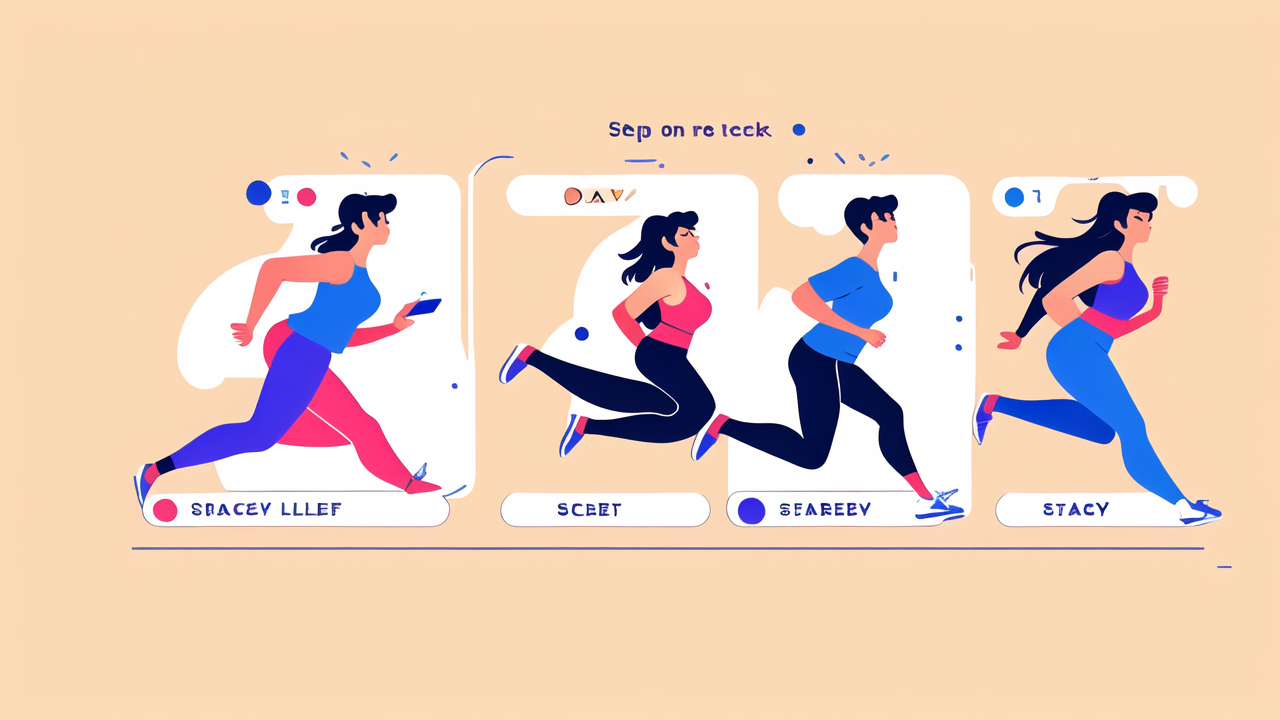The Evolution of Step Counters in the Fitness Industry
From Pedometers to Modern Fitness Trackers: A Timeline
Step counters have come a long way since their humble beginnings. The journey started with simple mechanical pedometers. These devices used a swinging pendulum to count steps. They were basic but effective for their time.

As technology advanced, so did step counters. Digital pedometers emerged in the 1980s. They offered more accuracy and features. Users could now track distance and calories burned.
The real game-changer came with the rise of smartphones. Apps turned phones into portable step counters. This made step tracking accessible to millions of people.
Today, we have smart watches and fitness bands. These devices do more than count steps. They monitor heart rate, sleep patterns, and even stress levels. The evolution continues with newer, more advanced models hitting the market each year.
How Wearable Technology is Revolutionizing Step Counting
Wearable tech has transformed step counting. It's no longer just about numbers. It's about integrating step data into our daily lives. Smart watches and fitness bands are always with us. They track our steps 24/7, not just when we remember to check.
These devices sync with our phones and computers. This makes it easy to view and analyze our data. Many offer real-time feedback and motivational prompts. They remind us to move when we've been sitting too long.
Some wearables now use GPS to map our routes. This adds context to our step count. We can see where we've been and plan future walks or runs. Social features let us compete with friends or join global challenges.
Advanced sensors in these devices improve accuracy. They can tell the difference between walking, running, and other activities. This gives us a more complete picture of our daily movement.
The Role of AI and Machine Learning in Advancing Step Counters
AI and machine learning are taking step counters to new heights. These technologies make our devices smarter and more personalized. They learn our habits and patterns over time. This allows for more accurate predictions and insights.
AI algorithms can now detect different types of movement. They can tell if we're walking, running, or climbing stairs. This leads to more precise calorie burn estimates. It also helps track specific exercises without manual input.
Machine learning helps devices understand our unique gait. This improves step counting accuracy across various activities. It can even detect changes that might indicate health issues.
These technologies also enable predictive features. Devices can suggest daily step goals based on our history and habits. They can adjust these goals as our fitness levels change. AI-powered virtual coaches can offer personalized advice and motivation.
Step Counters and Body Measurement Trackers: Enhancing Fitness Regimens
The Synergy Between Step Counters and Weight Management
Step counters and weight management go hand in hand. Tracking steps helps us understand our daily activity levels. This awareness often leads to increased movement. More steps usually mean more calories burned.

Many fitness trackers now combine step counting with calorie tracking. This gives users a clearer picture of their energy balance. It's easier to see how activity affects weight when both are monitored together.
Step goals can be powerful motivators for weight loss. Hitting daily targets gives a sense of accomplishment. This positive reinforcement can lead to long-term habit changes. Over time, these changes can result in significant weight loss.
Some devices now offer smart weight management features. They might suggest increasing step count if weight loss slows. Or they could recommend rest days to prevent burnout. This personalized approach can make weight management more effective.
Integrating Body Measurement Data for Improved Exercise Efficiency
Modern fitness trackers do more than count steps. They can measure various body metrics. This includes heart rate, body fat percentage, and muscle mass. Integrating this data with step counts offers a more complete fitness picture.
Heart rate data can show how hard we're working during walks or runs. This helps ensure we're exercising at the right intensity. It can also reveal improvements in cardiovascular fitness over time.
Body composition measurements add another layer of insight. We can see how our step count and other activities affect muscle and fat levels. This is especially useful for those aiming to build muscle or lose fat.
Some advanced devices even measure factors like VO2 max. This data can help users optimize their workouts. It allows for more precise training plans based on current fitness levels.
Step Counters and Body Measurement Trackers: A Tool for Personalized Fitness
The combination of step counters and body measurement trackers enables truly personalized fitness. These devices collect vast amounts of data about our bodies and habits. This data can be used to create tailored fitness plans.
AI algorithms analyze our data to spot patterns and trends. They can suggest optimal times for exercise based on our schedules and energy levels. They might recommend specific types of workouts to address our individual needs.
These devices can adapt their recommendations as we progress. If our step count increases, they might suggest more challenging goals. If we're not meeting targets, they can offer easier alternatives to keep us motivated.
Personalized insights can help us understand our bodies better. We might learn how different activities affect our sleep or stress levels. This knowledge empowers us to make informed decisions about our health and fitness.
Step Counters in the United States: Trends and Market Dynamics
The Growing Popularity of Step Counters in the U.S.
Step counters have seen a surge in popularity in the United States. This trend is part of a broader shift towards health and wellness. More Americans are taking an active interest in their daily activity levels.

The rise of smartphone apps has made step counting accessible to almost everyone. Many phones now come with built-in step tracking features. This has introduced millions to the concept of monitoring daily steps.
Wearable fitness trackers have also become fashion statements. Brands offer sleek designs that appeal to style-conscious consumers. This has helped step counters transition from purely functional to desirable accessories.
Workplace wellness programs often incorporate step challenges. This has further boosted the adoption of step counters. Many people now view step counting as a fun, social activity rather than a chore.
Market Analysis: Who is Using Step Counters and Body Measurement Trackers?
The user base for step counters and body measurement trackers is diverse. It spans various age groups and fitness levels. However, some trends are emerging in the U.S. market.
Millennials and Gen Z are major adopters of this technology. They're drawn to the data-driven approach to fitness. Many use step counters as part of a holistic wellness routine that includes diet and mental health.
Older adults are also embracing step counters. For many, it's an easy way to stay active and monitor health. Some doctors even recommend step counters to patients managing chronic conditions.
Fitness enthusiasts use advanced trackers to optimize their training. They rely on detailed data to fine-tune their workouts and recovery. This group often opts for high-end devices with multiple sensors.
Many parents are using step counters to encourage activity in their children. Kid-friendly versions of fitness trackers are growing in popularity. These often gamify step counting to make it more engaging for young users.
Future Projections: What's Next for Step Counters in Fitness?
The future of step counters in fitness looks bright. We can expect to see even more integration with other health metrics. This will provide a more comprehensive view of overall wellness.
Advancements in sensor technology will likely improve accuracy. Future devices might be able to detect more subtle movements and activities. This could lead to more precise calorie burn estimates and activity recognition.
AI and machine learning will play a bigger role. We might see more sophisticated predictive features. These could help prevent injuries by detecting changes in gait or suggesting rest days.
Integration with smart home devices is another potential trend. Step counters might communicate with other gadgets to create a more seamless wellness experience. For example, they could adjust lighting or temperature based on our activity levels.
As privacy concerns grow, we'll likely see more focus on data security. Future step counters may offer enhanced encryption and user control over data sharing. This could help address concerns about personal information being misused.
The line between medical devices and consumer gadgets may blur. Some step counters might gain FDA approval for monitoring specific health conditions. This could open up new markets and applications for these devices in healthcare.




Leave a comment
This site is protected by hCaptcha and the hCaptcha Privacy Policy and Terms of Service apply.